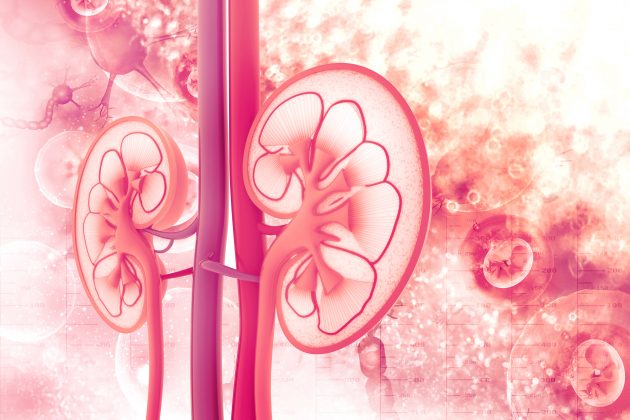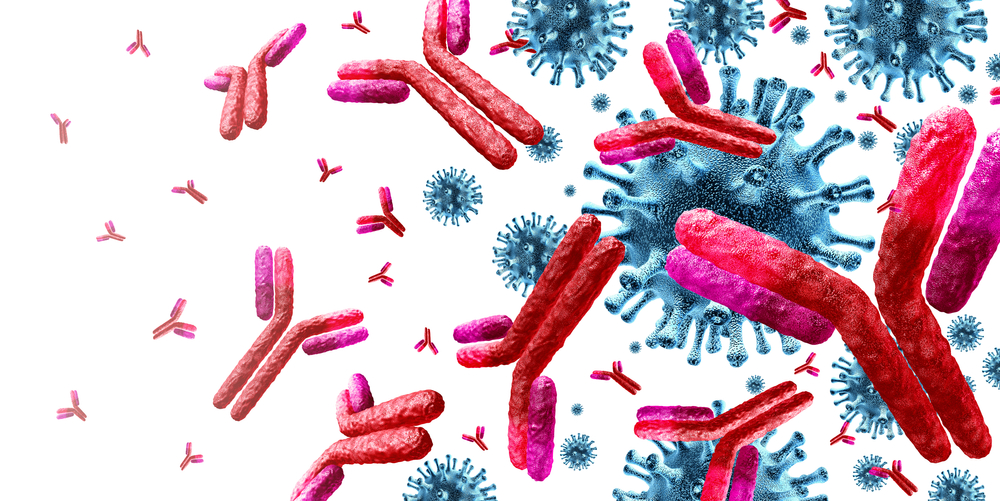Anemia, a complication of chronic kidney disease (CKD), results from a decreased synthesis of erythropoietin by the impaired kidneys and an altered iron metabolism. In the general population, the prevalence of anemia is 7.6%; among patients with CKD, the prevalence is 15.4%, increasing with severity of CKD.
Currently available treatments for CKD-associated anemia include erythropoiesis-stimulating agents (ESAs), including darbepoetin alfa (DA). However, safety concerns and adverse events associated with higher doses and hemoglobin goals in CKD patients with cancer, diabetes, and cardiovascular disease have resulted in a decrease in the doses of ESAs used. Further, the efficacy of ESAs is reduced in patients with inflammation.
Alternative therapeutic strategies for CKD-related anemia are being investigated. Roxadustat, an orally active hypoxia-inducible factor prolyl hydroxylase inhibitor, was approved in China in December 2018 for the treatment of dialysis-dependent CKD anemia; the drug is being investigated in Japan, the United States, and Europe.
Researchers in Japan, led by Tadao Akizawa, MD, PhD, conducted a phase 3, multicenter, randomized, double-blind study to evaluate the noninferiority of roxadustat to DA when both drugs are titrated to maintain hemoglobin levels of 10 to 12 g/dL in patients in Japan with renal anemia on hemodialysis. The study was conducted from November 2016 to March 2018 at 58 Japanese sites. Results were reported in the Journal of the American Society of Nephrology [2020;31(7):1628-1639].
Patients were randomized 1:1 to oral roxadustat three times weekly or DA injections once weekly for up to 24 weeks. There was no formal washout period; the treatment period began on the day of dialysis after the longest dialysis interval in the week when ESA had been administered.
Patients were ≥20 years of age with CKD anemia, receiving stable hemodialysis three times weekly for >12 weeks. Prior to randomization, patients were receiving intravenous (IV) short-acting recombinant human erythropoietin or DA for >8 weeks, had hemoglobin levels 10 to 12 g/dL, and transferrin saturation (TSAT) ≥20% or serum ferritin ≥100 ng/mL.
The primary end point was change of average hemoglobin from baseline to weeks 18 to 24. Secondary end points included average hemoglobin and proportion of patients with hemoglobin between 10 and 12 g/dL (maintenance rates) at weeks 18 to 24, and iron parameters. Safety assessments included treatment-emergent adverse events (TEAEs) and adjudicated ophthalmologic findings.
A total of 415 patients were screened; following application of inclusion and exclusion criteria, the final cohort included 303 patients who were randomized to receive roxadustat (n=151) or DA (n=152). Of those 303 patients, 250 completed the study (roxadustat, n=119; DA, n=131) and 53 discontinued (roxadustat, n-32; DA, n=21). Patient demographics and baseline characteristics were similar between the two groups.
In the safety analysis set, mean treatment compliance during the study period was 99.23% in the roxadustat group and 100% in the DA group. Mean duration of exposure was 146.7 days in the roxadustat group and 154.7 days in the DA group, and the mean dose per administration at week 23 was 67.1 mg in the roxadustat group and 31.4 mg in the DA group. The mean number of changes in study drug dosing was 2.8 the roxadustat group and 2.3 in the DA group.
In the per protocol set, the difference between roxadustat and DA in change in average hemoglobin from baseline to weeks 18 to 24 was –0.02 g/dL (95% confidence interval [CI], –0.18 to 0.15). The lower limit of the 95% CI was above the predefined noninferiority margin of –0.75 g/dL, confirming roxadustat’s noninferiority to DA. In the roxadustat group, the mean of average hemoglobin levels during weeks 18 to 24 was 10.99 g/dL and its 95% CI (10.88 to 11.10 g/dl) was within the prespecified reference range of 10 to 12 g/dL, confirming the efficacy of roxadustat.
In a secondary analysis in the full analysis set, results were similar. The mean of average hemoglobin levels during weeks 18 to 24 was 11.0 g/dL (95% CI, 10.89 to 11.10 g/dL) in the roxadustat group. The least squares mean of the change in average hemoglobin from baseline to weeks 18 to 24 was –0.07 for the roxadustat group and –0.06 g/dL for the DA group, and the estimated difference between the least squares means of the two groups was –0.01 /dL (95% CI, –0.18 to 0.16 g/dL).
In the full analysis set, the mean of average hemoglobin levels during weeks 18 to 24 was 11.00 g/dL (95% CI, 10.89 to 11.10 g/dL) in the roxadustat group and 10.95 g/dL (95% CI, 10.84 to 11.05 g/dL) in the DA group. The mean difference between the two groups was 0.05 g/dL (95% CI, –0.10 to 0.20 g/dL).
Among patients with at least one hemoglobin value during weeks 18 to 24, the maintenance rates of the target hemoglobin level was 95.2% (95% CI, 89.8% to 98.2%) for the roxadustat group and 91.3% (95% CI, 85.3% to 95.4%) for the DA group. The difference between the two groups was 3.9% (95% CI, –2.9% to 10.7%).
Mean values of serum iron, soluble transferrin receptor, TSAT, reticulocyte hemoglobin content, and ferritin remained clinically stable in both treatment groups.
The two groups were similar in the proportion of patients who reported TEAEs: 129/150 (86.0%) in the roxadustat group and 126/152 (82.9%) in the DA group. The incidence of serious TEAEs was 20.7% (31/150) in the roxadustat group and 14.5% (22/152) in the DA group. Serious TEAEs potentially related to the study drug were reported in 3.3% (5/150) of the roxadustat group and 3.9% (6/152) of the DA group.
Retinal hemorrhage was reported as a TEAE in 3.3% (5/150) of the roxadustat group and 3.9% (6/152) in the DA group. The proportion of patients with new or worsening retinal hemorrhage was 32.4% in the roxadustat group and 36.6% in the DA group. There were no clinically meaningful changes in retinal thickness from week 0 through the end of treatment in either group.
The authors cited some limitations to the study findings, including not including a placebo group for comparison, the study being underpowered to provide a definitive conclusion regarding overall safety or cardiovascular outcomes, and the need for a longer study period.
In summary, the researchers said, “Overall, this study demonstrated the efficacy of orally administered roxadustat and its noninferiority to DA in maintaining the levels of hemoglobin within the target range in Japanese patients with anemia on hemodialysis. Roxadustat displayed a manageable safety profile with no increased risk of ophthalmologic abnormalities; however, further investigation will be required to firmly establish the safety profile of roxadustat in this population. Additional large, long-term phase 3 studies of roxadustat are currently underway to confirm and extend these efficacy- and safety-related findings to other CKD populations.”
Takeaway Points
- Researchers in Japan reported on a phase 3, active-comparator trial among patients with anemia on hemodialysis treated with either roxadustat or darbepoetin alfa (DA).
- The difference between the two groups in change in average hemoglobin levels at weeks 18 to 24 was –0.02 g/dL, confirming the noninferiority of roxadustat to DA.
- The safety profiles were similar in the two groups; with no increased risk of ophthalmologic abnormalities.
Credit: Original article published here.










